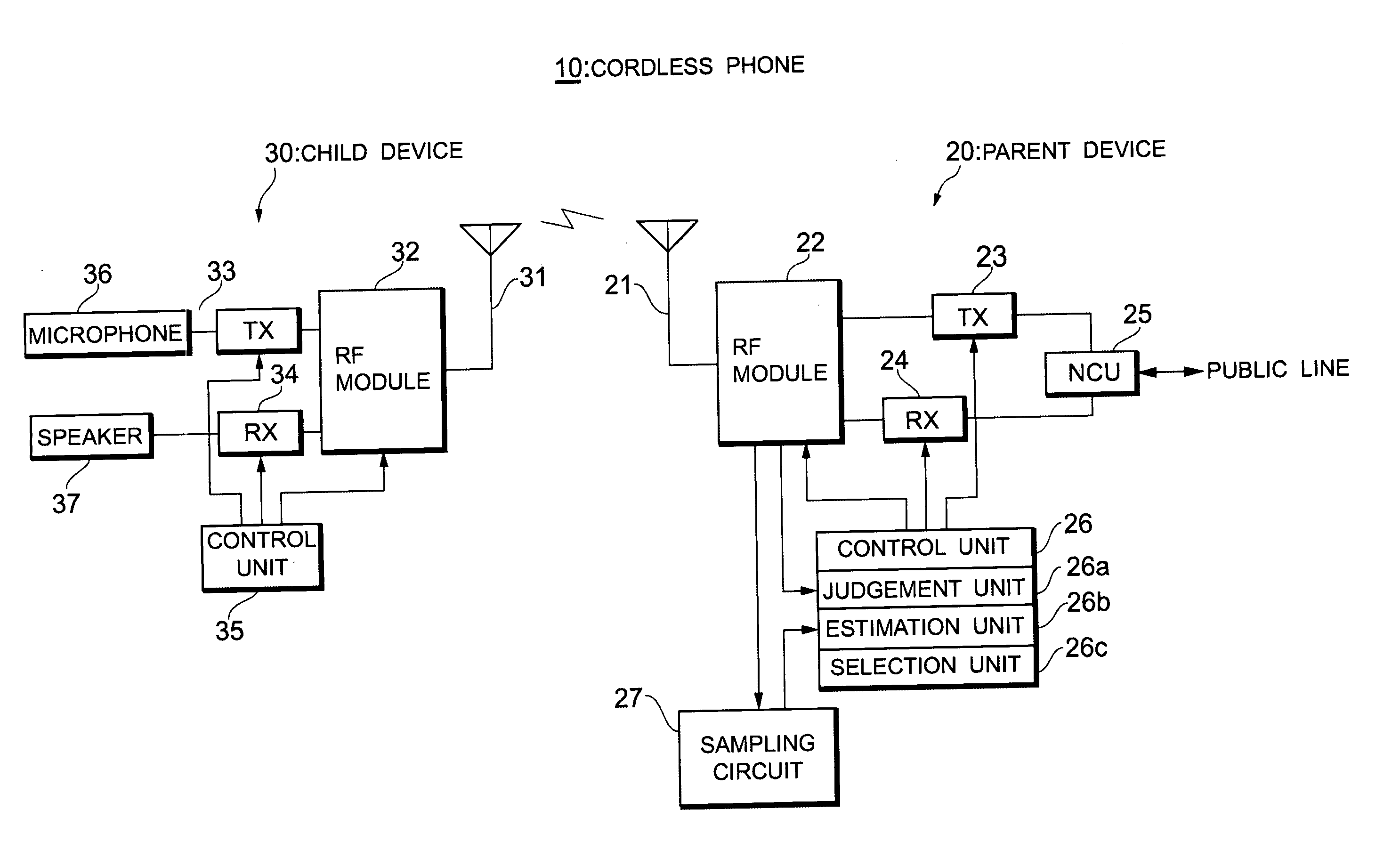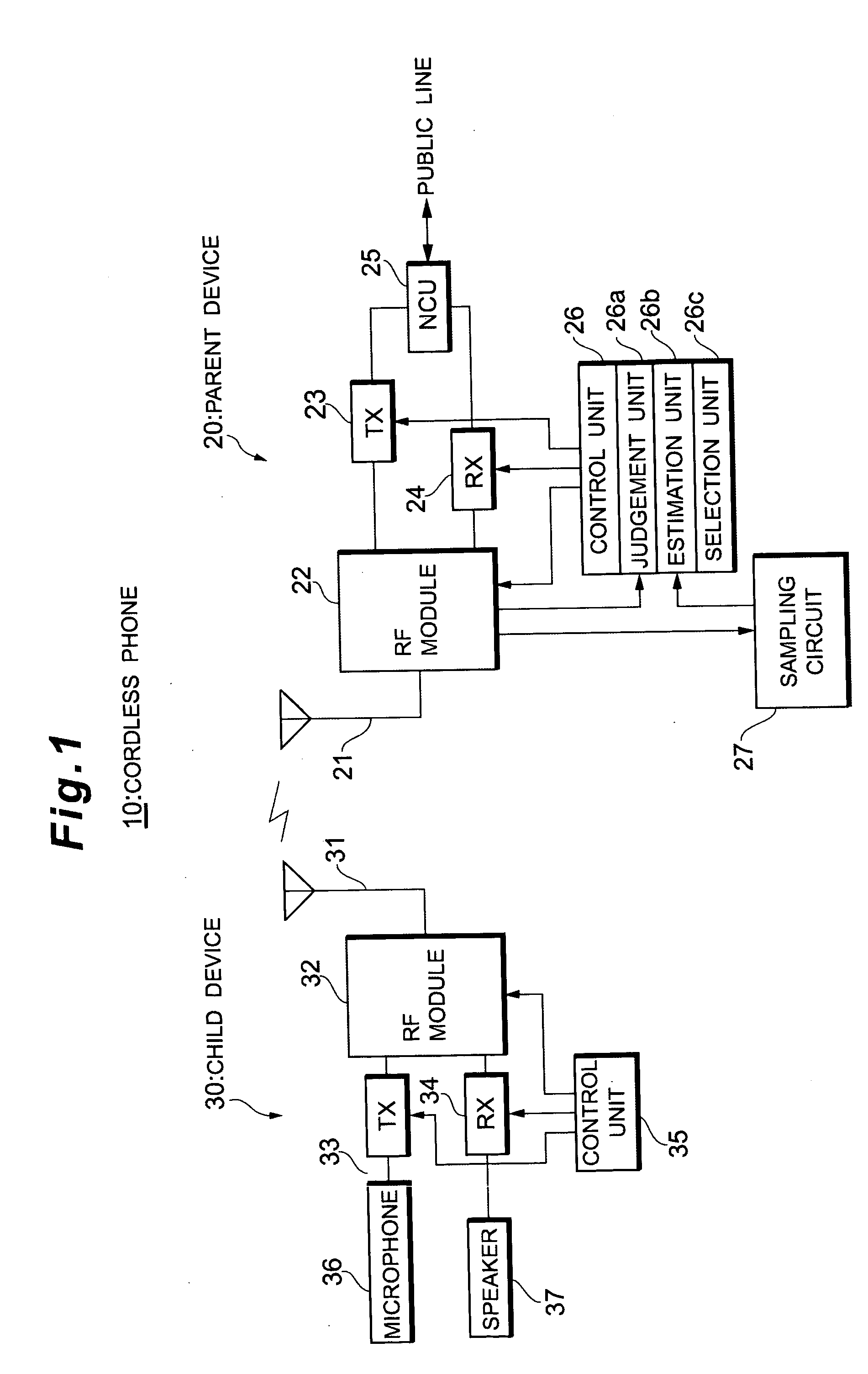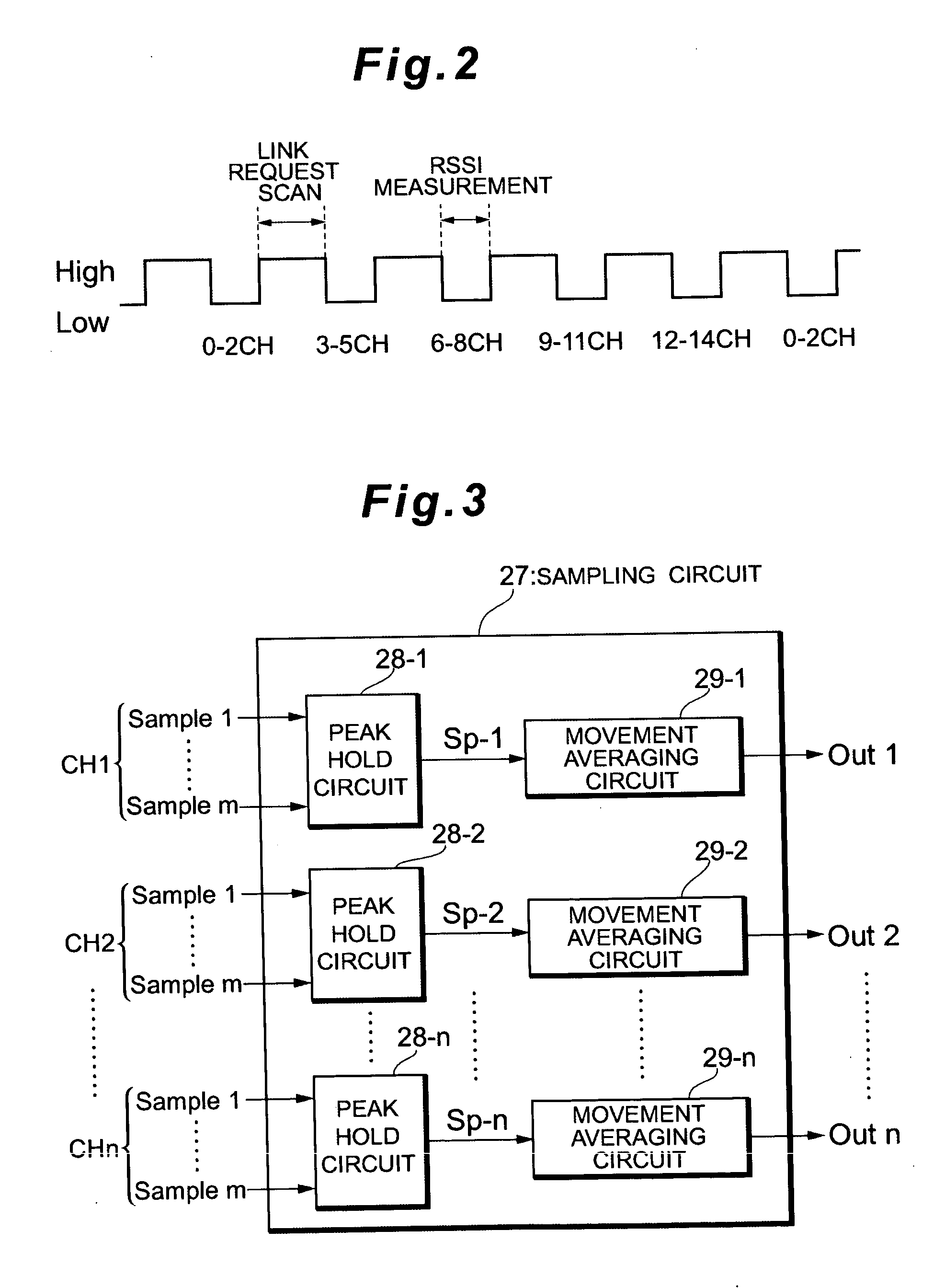Wireless communication device, interference source estimation method and channel selection method
- Summary
- Abstract
- Description
- Claims
- Application Information
AI Technical Summary
Benefits of technology
Problems solved by technology
Method used
Image
Examples
Embodiment Construction
[0015] An embodiment will be described hereinbelow with reference to the drawings.
[0016]FIG. 1 shows the function blocks of the cordless phone pertaining to this embodiment.
[0017] The cordless phone 10 is constituted comprising a parent device 20 and a child device 30. The parent device 20 is connected to a public line via a network control unit (NCU) 25. After subjecting a speech signal sent by the public line to amplification processing and so forth by means of a transmission-processing unit (TX) 23, the parent device 20 modulates the amplified speech signal by means of a high frequency (RF) module 22 and transmits the modulated speech signal to the child device 30 via an antenna 21. In addition, after receiving, via the antenna 21, wireless radio waves that are sent by the child device 30, the parent device 20 demodulates these wireless radio waves by means of the RF module 22 before subjecting this signal to amplification or other processing by means of a reception processing ...
PUM
 Login to View More
Login to View More Abstract
Description
Claims
Application Information
 Login to View More
Login to View More - R&D
- Intellectual Property
- Life Sciences
- Materials
- Tech Scout
- Unparalleled Data Quality
- Higher Quality Content
- 60% Fewer Hallucinations
Browse by: Latest US Patents, China's latest patents, Technical Efficacy Thesaurus, Application Domain, Technology Topic, Popular Technical Reports.
© 2025 PatSnap. All rights reserved.Legal|Privacy policy|Modern Slavery Act Transparency Statement|Sitemap|About US| Contact US: help@patsnap.com



